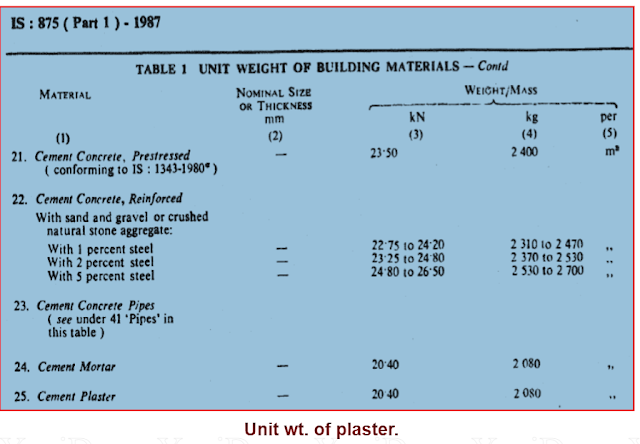Let us consider a brick wall as shown in the below-given drawing.
Given data:
Length of the wall = 4m.
Height of the wall = 3m.
The thickness of the wall = 0.23m.
The self-weight of the wall is calculated by the formula
= [unit weight × volume of the wall]
The volume of the brick wall
= [length × height × thickness]
= [ 4m. × 3m. × 0.23m.]
= 2.76 cum.
As per IS: 875(Part-1)-1987, the unit weight of masonry brick ( burnt clay) is 1920kg /cum.
The self-weight of the wall
= [unit weight × volume of the wall]
= [ 1920 kg/cum. × 2.76 cum.]
= 5299.20 kg.
Now, the question is " What will be the dead load of the plastered wall?"
As per IS: 875, the unit weight of cement plaster or cement mortar is 2080 kg/cum.
So, to calculate the dead load of the plastered brick wall, the practical way is to consider an overall unit wt. of 2100 kg/cum.
Now, the self-weight of the finished wall
= [unit weight × volume of the finished wall]
= [ 2100 kg/cum. × 2.76 cum.]
= 5796 kg.
Thank you for going through these calculation steps❤. Have a good day 😄.














No comments:
Post a Comment